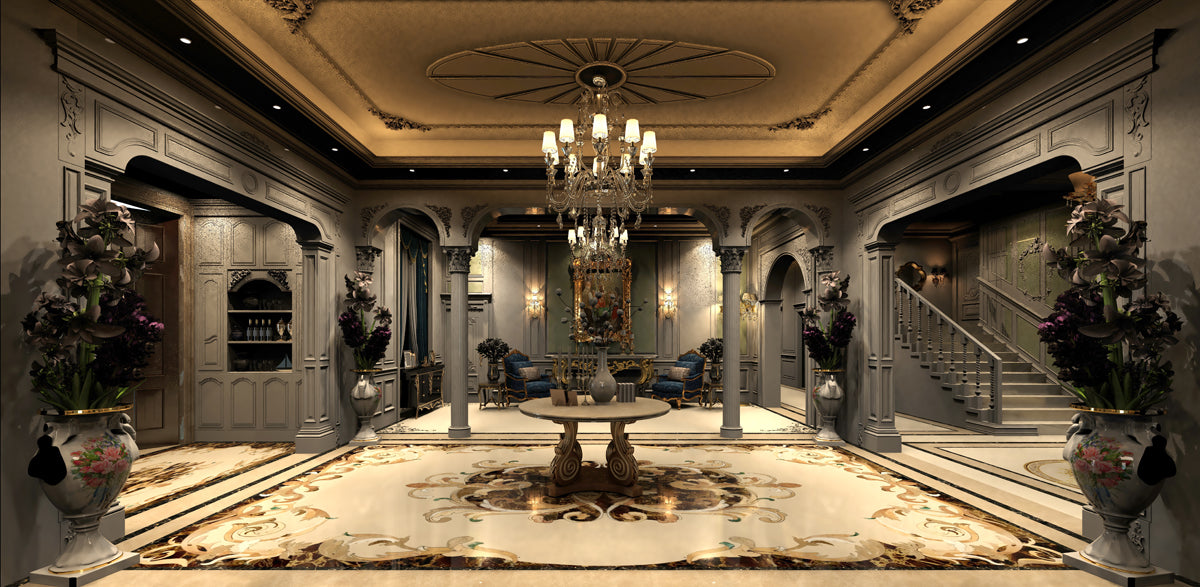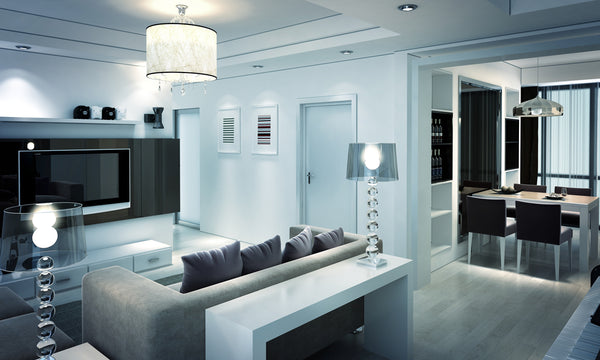On orders $99+
On orders $99+

The difference between modern and traditional lighting lies in their design principles, aesthetic appeal, and the era they reflect. Modern lighting is characterized by its clean lines, minimalistic forms, and the use of contemporary materials, such as metals and glass, often incorporating innovative technology for efficiency and functionality. It embodies the modernist ethos of "form follows function," presenting sleek, streamlined fixtures that fit seamlessly into contemporary spaces. In contrast, traditional lighting draws inspiration from historical styles, featuring intricate details, ornate designs, and the use of classic materials like wrought iron, wood, and fabric shades. Traditional fixtures often convey a sense of warmth and elegance, evoking a timeless quality that complements classic decor. While modern lighting emphasizes simplicity and the future, traditional lighting celebrates the richness of the past and ornamental beauty.
Embarking on the journey to illuminate your home brings you to a crossroads: the sleek, streamlined paths of modern lighting, or the warm, intricate avenues of traditional lighting. This choice isn't merely about shedding light on your spaces; it's about defining them, infusing them with an ambiance that reflects your personal style. For DIY homeowners and aspiring interior designers delving into the nuances of lighting design, understanding the difference between modern and traditional lighting is pivotal in crafting spaces that resonate with your vision.

Modern Lighting: The Essence of Minimalism and Innovation
Modern lighting, born from the Modernist movement of the early to mid-20th century, is characterized by its emphasis on simplicity, functionality, and the use of innovative materials. Picture walking into a room bathed in the soft, ambient glow of a sleek, geometric pendant lamp suspended from a high ceiling, its form as much a piece of art as a source of light. Modern fixtures often favor clean lines, neutral colors, and metallic finishes like chrome and brushed nickel, seamlessly blending with contemporary decor. They embody the principle that "less is more," eschewing ornate details for a look that is both timeless and forward-thinking. LED technology frequently stars in modern designs, offering energy efficiency and versatile lighting solutions, from bright task lighting to soft, color-changing ambiance. Modern lighting doesn't just illuminate; it elevates, transforming spaces with a vibe that's cool, collected, and unmistakably contemporary.

Traditional Lighting: A Nod to the Past with Timeless Elegance
In contrast, traditional lighting harkens back to the past, drawing inspiration from historical styles, from the ornate flourishes of the Baroque period to the delicate curves of the Victorian era. Imagine the warm, inviting light of a chandelier with intricate metalwork and crystal droplets casting a sparkling light across a room, its elegance accentuating the rich textures and colors of traditional decor. Traditional fixtures often feature richer, deeper colors, with materials like wrought iron, bronze, and wood, and are adorned with details such as scrolling arms, decorative finials, and lampshades in fabric or stained glass. The beauty of traditional lighting lies in its ability to create a sense of warmth and comfort, evoking a nostalgic charm that makes a house feel like a cherished home. It's about more than illumination—it's about storytelling, each piece a tribute to the craftsmanship and aesthetic values of bygone eras.

Blending Worlds: The Transitional Approach
For those who find themselves drawn to both modern simplicity and traditional elegance, transitional lighting offers a harmonious blend. This approach marries the clean lines of modern design with the warm details of traditional fixtures, creating versatile pieces that can complement a wide range of interior styles. Transitional lighting allows for a fluid, adaptable lighting scheme that can evolve with your tastes and needs, making it a popular choice for those looking to strike a balance between the old and the new.
Illuminating Your Project
The decision between modern and traditional lighting isn't just about choosing fixtures; it's about setting a mood, defining character, and ensuring every corner of your space not only looks exceptional but also fulfills its purpose with elegance and efficiency.
In a cozy, book-lined study, the warmth and detail of traditional lighting can transform the room into a sanctuary of comfort and history, inviting hours of exploration into the pages of your favorite novels. Picture a richly detailed table lamp casting a soft pool of light over an antique desk, its intricate design echoing the bindings of classic literature that surrounds it. Or perhaps, in a modern, minimalist living space, sleek and sophisticated modern lighting fixtures act as sculptural elements, their clean lines and subdued elegance complementing the contemporary decor. Imagine a streamlined pendant light hanging gracefully above a sleek coffee table, its LED glow illuminating the simplicity and beauty of the room.
However, the magic truly happens when you begin to layer different types of lighting. Ambient lighting sets the overall tone of the room, while task lighting focuses on specific areas, making daily activities like reading or cooking a pleasure. Accent lighting highlights architectural features or artwork, adding depth and dimension to the space. Through layering, you create a dynamic lighting scheme that adapts to the ever-changing moods and functions of your space.
Don't shy away from mixing modern and traditional elements to achieve a look that's uniquely yours. A classic chandelier can add an unexpected twist to a modern room, just as a sleek, contemporary floor lamp can bring a touch of modernity to a traditional setting. This approach allows for a personalized space that tells a story, blending the past with the present in a harmonious display of light.
In conclusion, lighting your project is an artful balancing act between tradition and innovation, form and function. By considering the aesthetic appeal, the quality of light, and the interplay of different lighting types, you can create a space that not only serves its intended purpose but also reflects your personal style and vision. Whether you lean towards the charm of traditional lighting or the clean aesthetic of modern fixtures, the key is to envision your space as a canvas, where light paints the mood, highlights your treasures, and turns everyday moments into scenes of beauty and relaxation.
Helpful Links:
Illuminating Interiors: The Art and Science of Choosing the Best Indoor Lighting
Should I Have Matching Light Fixtures in Every Room?
Illuminating Your Home: Understanding the Different Types of Lighting
Leave a comment